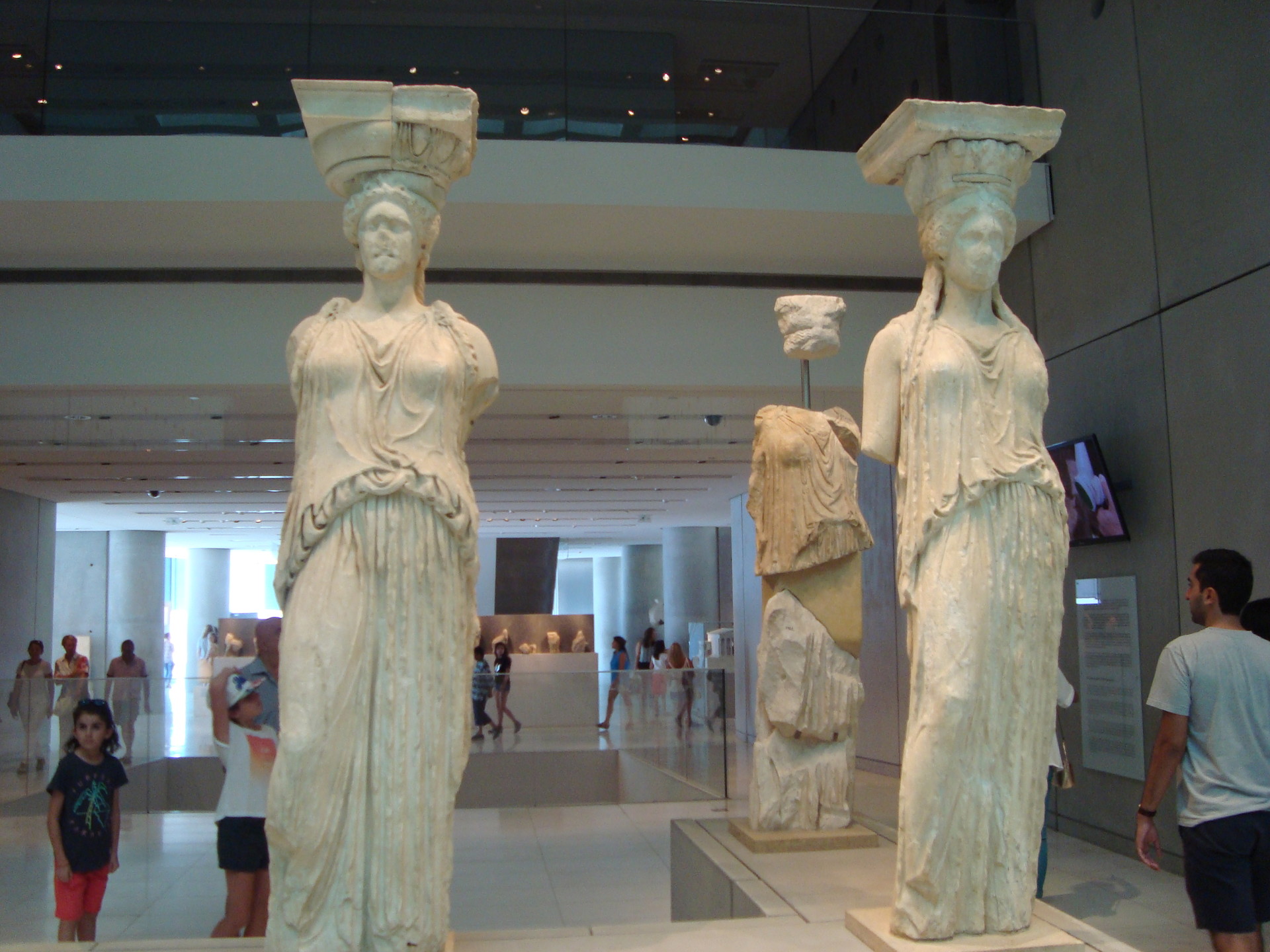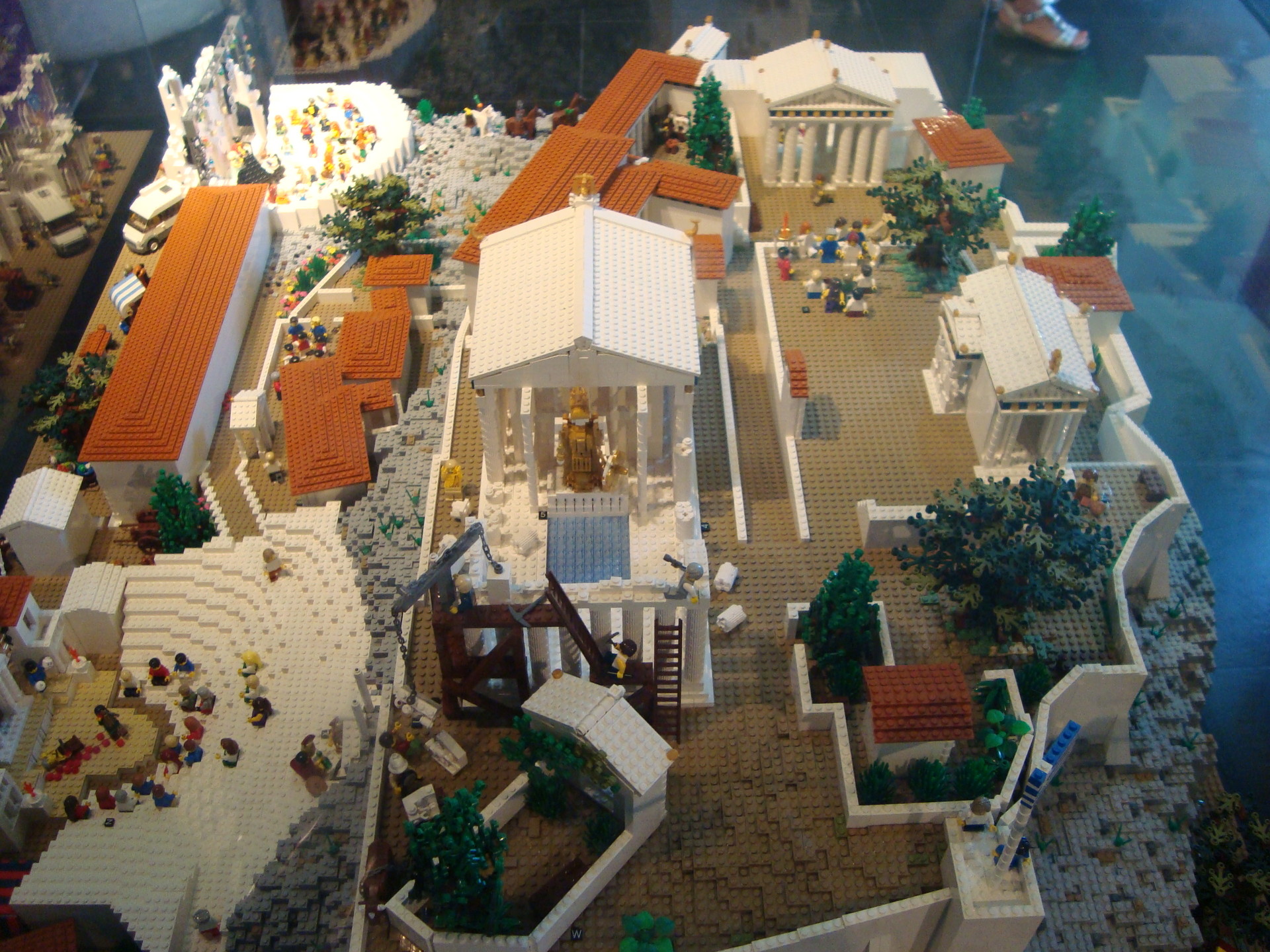Acropolis Museum Part 2 - Statues and Colours
Having finished the ground floor of the museum, we walked up to see the next part ... parts from excavations were to be seen along the walk upstairs. They used all the space available!
The first floor of the museum showcased something surprising. Maybe we thought of Greco-Roman antiquity as something all-white with blank marble, but this is far from true: Many buildings, statues and sculptures were painted in vivid colours, they had only been washed of by wind and weather.

Here is an example: A piece of marble from a statue (I suppose) was re-painted with vivid natural colours as they would have used to give the visitor an authentic experience of the past.

As you can see here, the colours were extracted from natural materials such as ocre and eventually mixed; the more impressive is the result from such simple ingredients.

Then, the colours would be applied to statues such as these korai (girls) to make them seem life-like. You might want to google some reconstructions of them. (Do you remember where they were? Right, at the Erechtheion on the Acropolis for example!)

This is an unfortunate result of colours staying on the artworks while not staying in the right place due to rain. This woman looks a bit like a modern-day gothic girl or drama queen with these eye-liners and the smear on her cheek (no offense, just a comparison).

Even more back to the originals! This is how the colours were made and mixed from various stones and ores: Ground and mixed with fat, if I remember correctly.

At the end, a surprise awaited us: The Acropolis as a reconstructed LEGO city! Well played, archeologists! Imagine this as your "work"! You can see the Propylaeum, Erechtheion, the olive tree, the Parthenon Temple to Athena under construction, the Odeon of Herodes Atticus and the Theatre of Dionysos where a gory death is being played ... but wait, Shakespeare was not famous yet?!
A third part on the second floor of the museum is waiting for you!
Photo gallery
Want to have your own Erasmus blog?
If you are experiencing living abroad, you're an avid traveller or want to promote the city where you live... create your own blog and share your adventures!
I want to create my Erasmus blog! →





















Comments (0 comments)